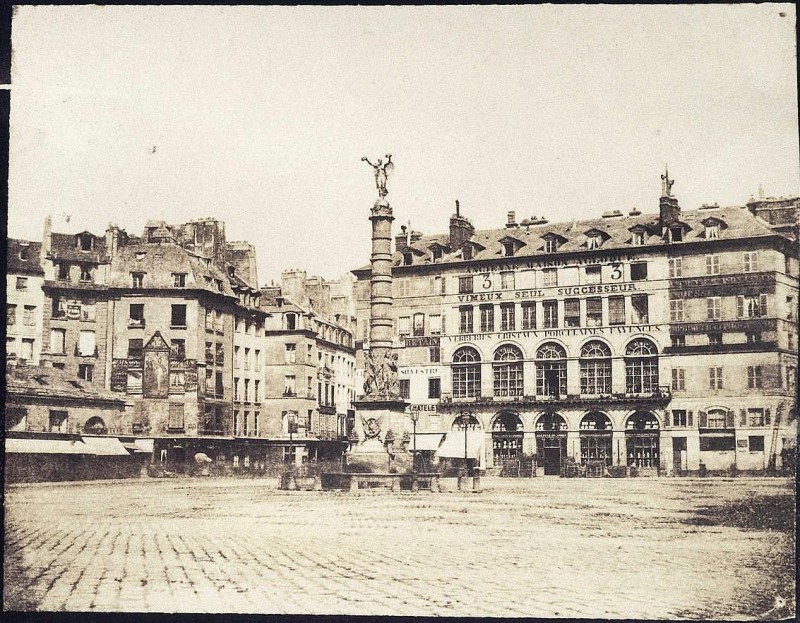
La Place du Châtelet tient son nom d’une petite forteresse “Le Grand Châtelet” construite sous Louis VI le Gros. Elle servait à la fois de tribunal et de prison.
Devenue inutile suite à la suppression de la prévôté en 1790, elle sera détruite par Napoléon Ier en 1808. Le Châtelet deviendra alors une place au centre de laquelle sera installée une “Fontaine des Victoires” conçue par l’architecte Bralle. La “Statue de la Victoire” au sommet de la “Colonne des Palmiers” érigée en son centre, est l’oeuvre de Boizot.
A compter de 1858, la place du Châtelet sera profondément modifiée. Le percement du boulevard de Sébastopol impliquera de déplacer la fontaine d’une douzaine de mètres vers l’est. L’opération de transfert durera 18 minutes. On profitera de ce réaménagement pour lui ajouter un bassin inférieur orné de quatre sphinx (Davioud / Jacquemart) et rénover la Tour Saint Jacques. En effet, celle ci fut déchaussée par le nivellement du sol. Ses bases seront ainsi consolidées par une assise de 14 marches.
Deux théâtres symétriques seront construits de par et d’autre de la nouvelle place en 1862. A gauche le Théâtre Impérial est rebaptisé Théâtre du Châtelet après la chute de Napoléon III. A l’est, le Théâtre Lyrique deviendra le Théâtre Sarah Bernhardt puis le Théâtre de la Ville.
L’architecture de ces deux bâtiments est conçue sur la base des critères du Second Empire avec une entrée sous arcade et une décoration intérieure inspirée de la Basilique de Palladio.
.
The Place du Châtelet takes its name from a small fortress which once stood there, named, paradoxically, ‘Le Grand Châtelet’ (‘The Great Châtelet’). Built by Louis VI le Gros (Louis the fat!), it served as both tribunal and prison.
The castle became redundant after the abolition of the provost-marshal in 1790, and was finally demolished by Napoleon in 1808. In its place, the empty space became a square, and was adorned with the ‘Fontaine des Victoires,’ designed by the architect Bralle. The ‘Statue de la Victoire’, which crowns the fountain’s central pillar, the ‘Colonne des Palmiers’, is a work by Boizot.
The square was transformed during the Haussmann era, starting in 1858. The new Boulevard de Sébastapol, which now opened onto the square, meant that the fountain had to be moved about 12 metres to the east, an operation which, remarkably, took only 18 minutes. There, it was installed in a new, deeper basin, ornamented with four sphinxes designed by Davioud, and sculpted by Jacquemart. The Tour Saint Jacques, located just behind the square, was also renovated for the occasion, seeing its base reinforced by a new set of 14 stone steps which protected its foundations from soil erosion.
Two twin theaters were constructed on either side of the new square in 1862. To the west was the Theater Impérial, renamed the Théâtre du Châtelet after the fall of Napoleon III. To the east was the Theater Lyrique, which would soon become the Theaters Sarah Bernhardt, and then the Theater de la Ville.
The architectural style of these two buildings followed the general criteria of the Second Empire, with a grand entrance situated under an arcade, and interior decoration inspired by the Palladian Basilica in Venice.
The castle became redundant after the abolition of the provost-marshal in 1790, and was finally demolished by Napoleon in 1808. In its place, the empty space became a square, and was adorned with the ‘Fontaine des Victoires,’ designed by the architect Bralle. The ‘Statue de la Victoire’, which crowns the fountain’s central pillar, the ‘Colonne des Palmiers’, is a work by Boizot.
The square was transformed during the Haussmann era, starting in 1858. The new Boulevard de Sébastapol, which now opened onto the square, meant that the fountain had to be moved about 12 metres to the east, an operation which, remarkably, took only 18 minutes. There, it was installed in a new, deeper basin, ornamented with four sphinxes designed by Davioud, and sculpted by Jacquemart. The Tour Saint Jacques, located just behind the square, was also renovated for the occasion, seeing its base reinforced by a new set of 14 stone steps which protected its foundations from soil erosion.
Two twin theaters were constructed on either side of the new square in 1862. To the west was the Theater Impérial, renamed the Théâtre du Châtelet after the fall of Napoleon III. To the east was the Theater Lyrique, which would soon become the Theaters Sarah Bernhardt, and then the Theater de la Ville.
The architectural style of these two buildings followed the general criteria of the Second Empire, with a grand entrance situated under an arcade, and interior decoration inspired by the Palladian Basilica in Venice.
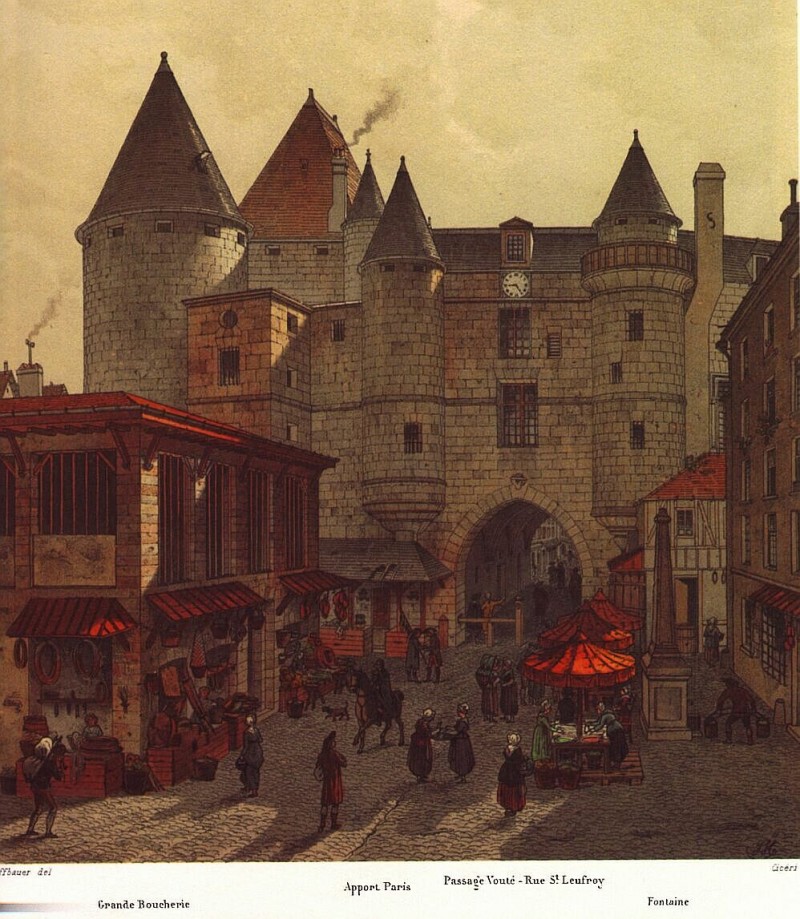
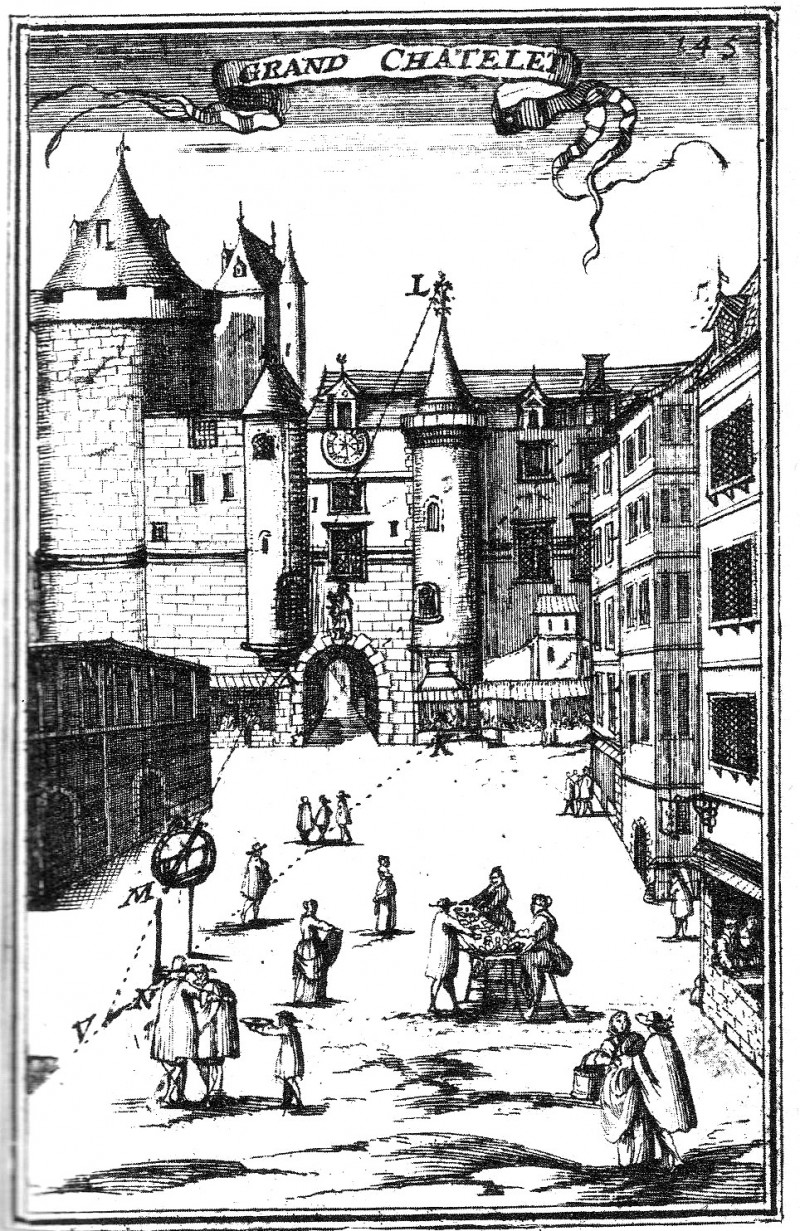
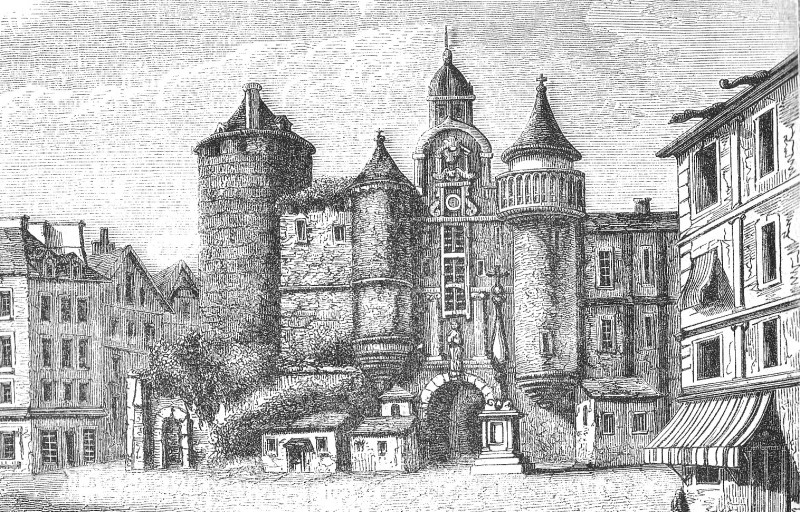
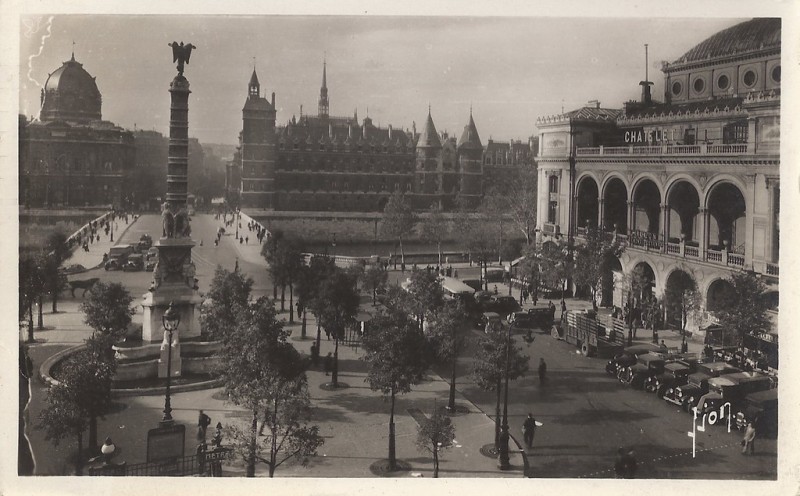
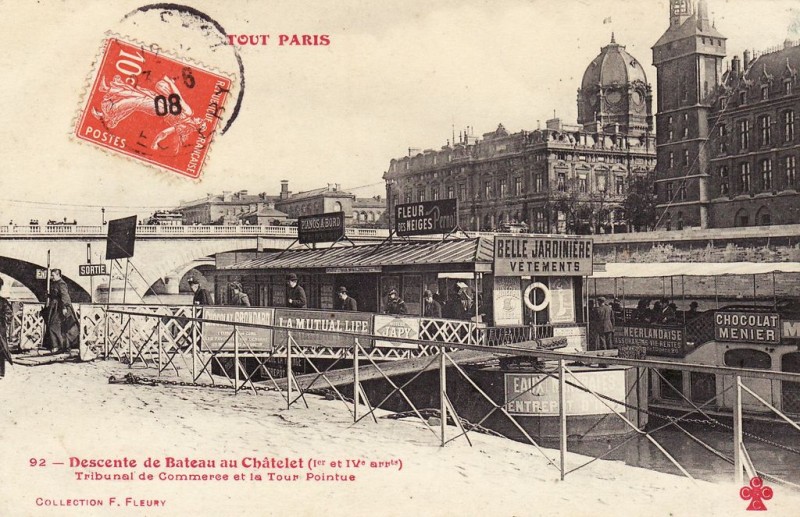
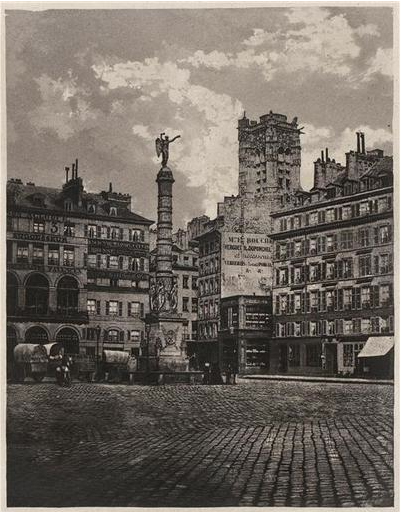
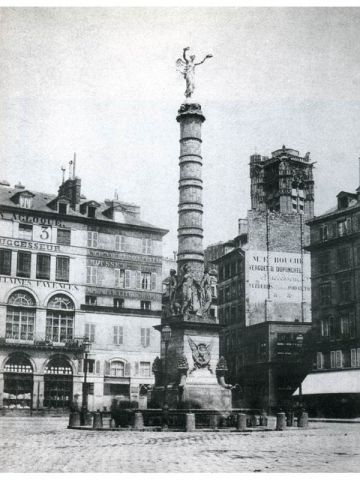
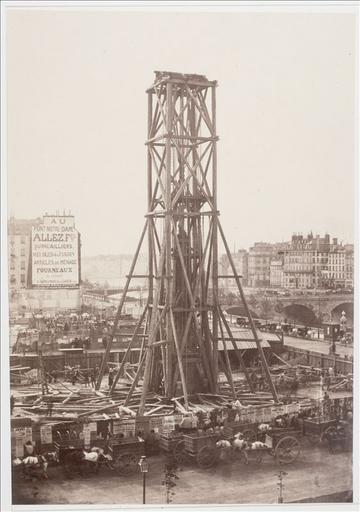
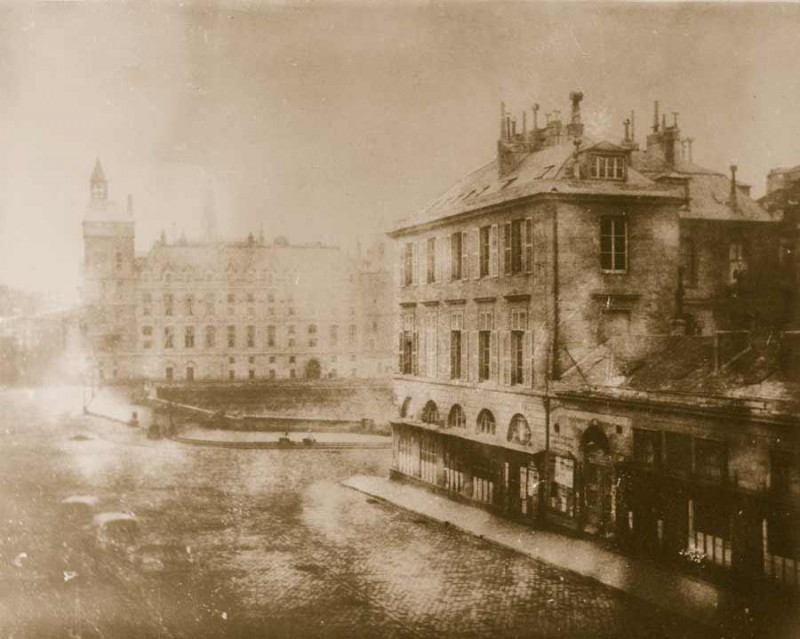
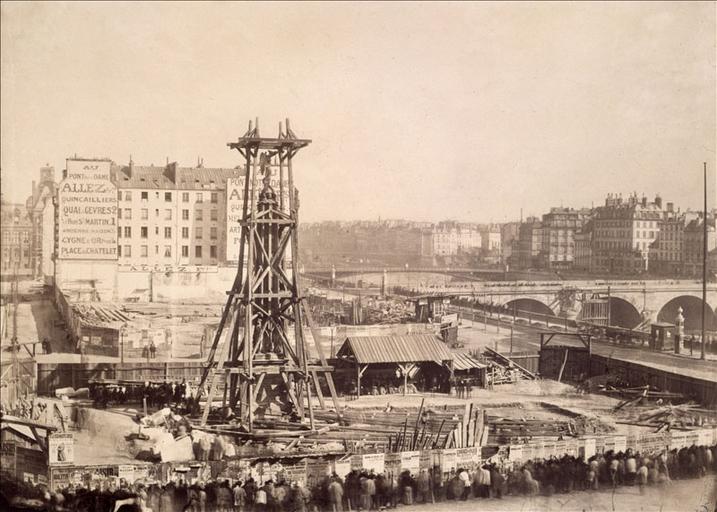
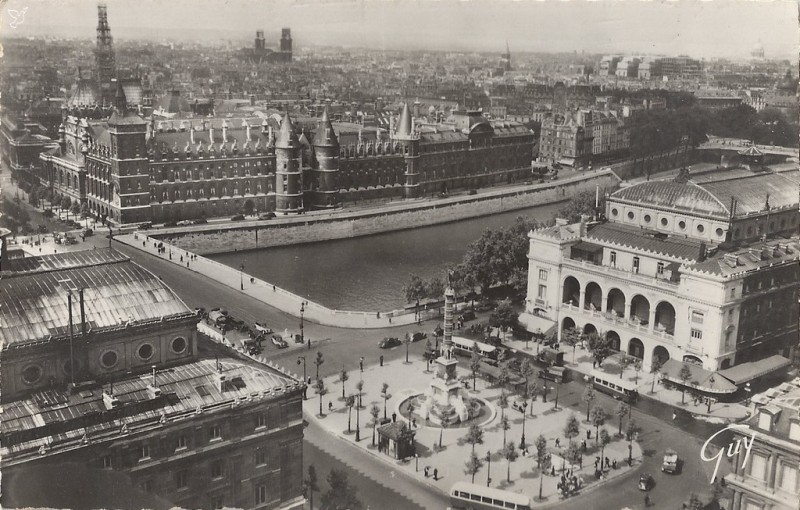
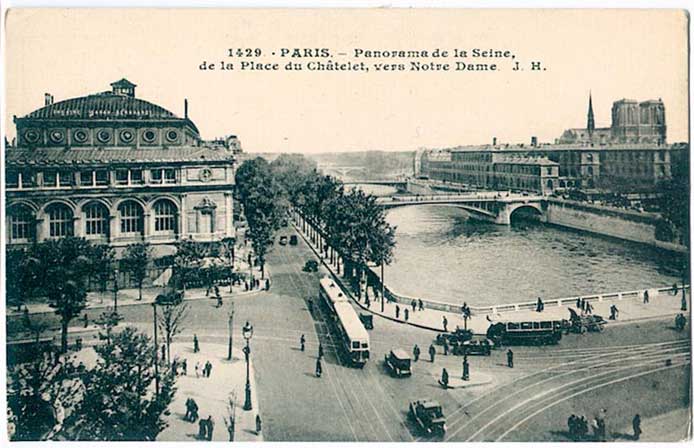
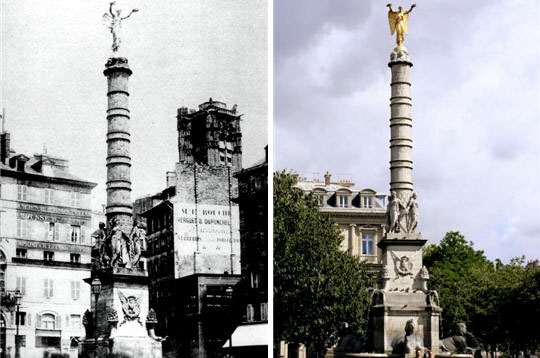



3 réponses
Daniel
Encore un superbe voyage dans le temps que tu nous offres Nicolas. Merci !
Daniel.
Anonymous
Superbe ! Moi qui rêve de voir Paris du haut de la Tour St Jacques !!!
Merci
J-Luc
Sylvain
Merci, la première photo est superbe!
JL, la Tour St Jacques était ouverte lors des dernières JDP; elle le sera peut-être à nouveau lors des prochaines.